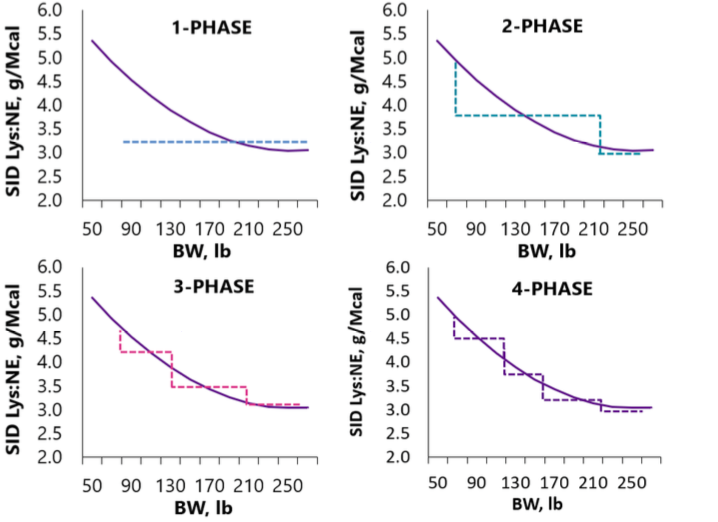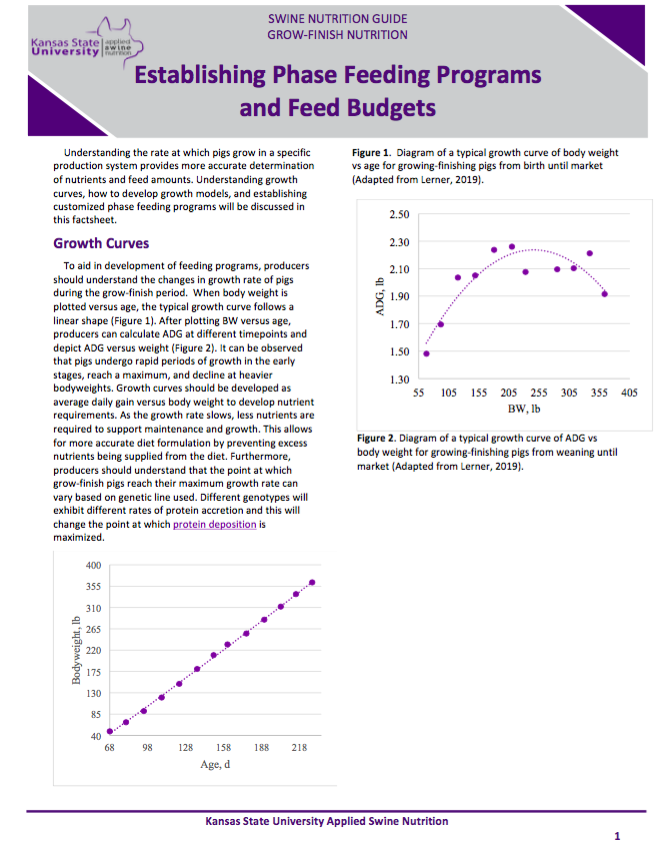Phase Feeding
Phase feeding is a strategy where multiple diets are fed to a group of pigs based on feed budgets or weight ranges to closely meet the pigs nutrient requirement. It is generally understood that grow-finish pigs nutrient requirements decrease over the entirety of the grow-finish period and phase feeding is employed to meet these changing nutrient demands (Figure 1).

Figure 1. Diagram of phase-feeding strategies (dash line) in relation to estimated lysine requirement (solid line) expressed as a ratio of SID lysine to net energy (Menegat et al., 2019).
Nutrient requirements must be accurately estimated as the pig progresses through the grow-finish period to optimize growth performance and economic output. In the past, we have recommended 5 to 6 dietary phases from 50 lb to market weight. This is to closely meet the pig’s changing nutrient requirements and reduce nutrient excretion in waste. However, recently it has been shown that these 5 to 6 phase programs may not provide greater economic return than a 3 to 4 phase system (Menegat et al., 2019). In some cases where pigs might be underfed, compensatory growth is achieved by pigs either increasing voluntary feed intake or improving feed efficiency. To achieve compensatory growth, pigs require adequate, if not greater amino acid concentrations in the finishing period to exhibit the potential benefits (Whang et al., 2003). As long as diets fed prior to pigs being marketed meet or exceed the pigs’ requirement, compensatory growth can occur and recapture lost performance due to diets being below their requirement in earlier phases (Main et al., 2008; Menegat et al., 2019). However, if the amino acid restriction is too long or severe and the compensatory period too short, compensatory growth may not occur. The number of dietary phases and nutrient fortification should be carefully evaluated with a nutritionist.
On the other hand, decreasing the number of diets fed can provide benefits to the feed manufacturing process by improving feed mill efficiency and simplifying mill logistics (Moore et al., 2013). Therefore, if feed intake and initial BW are accurately determined in a production system, simplifying phase-feeding programs can optimize growth performance and economics of a feeding program.
